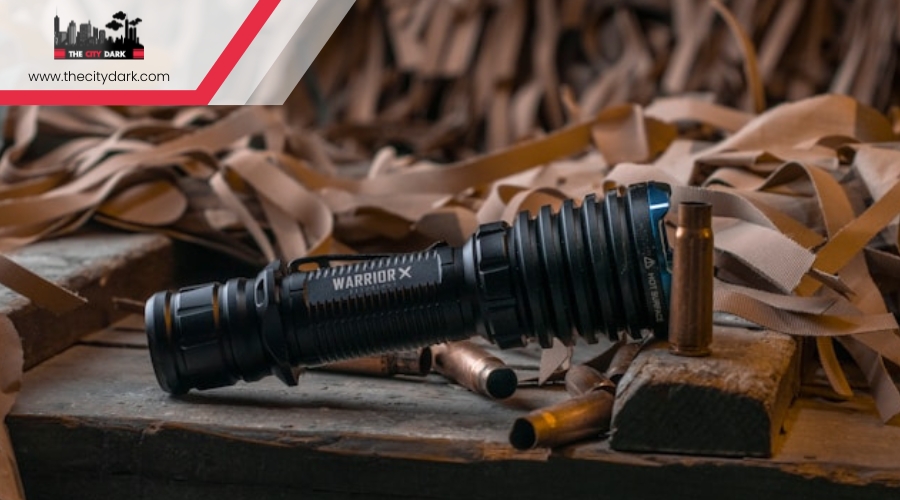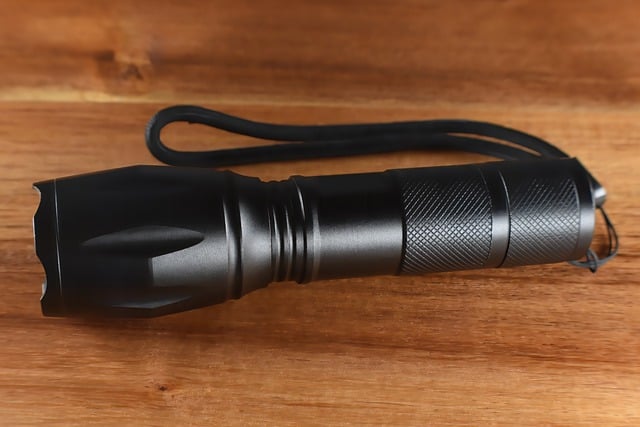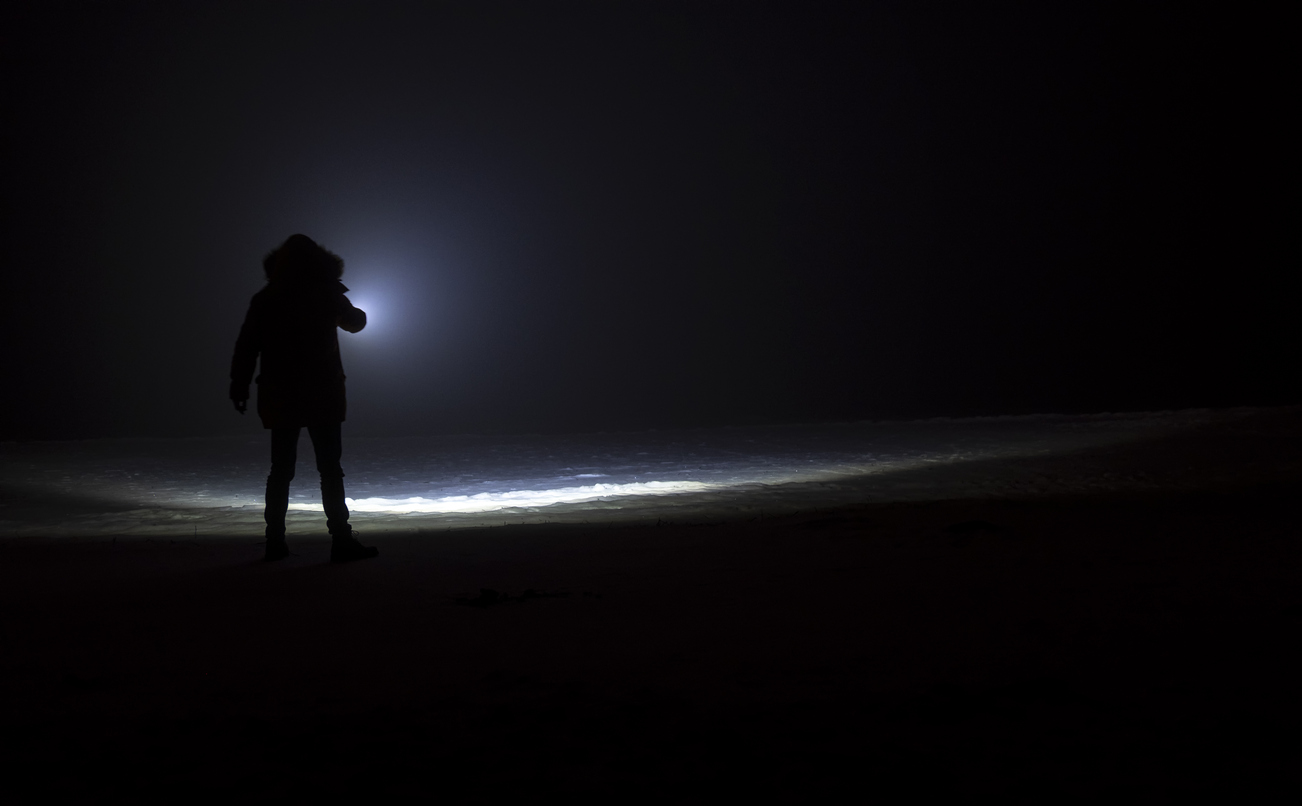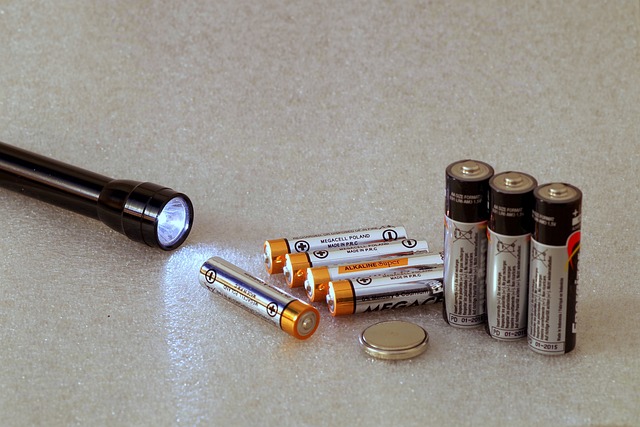You might not be aware that the humble flashlight, often overlooked as a simple tool for night navigation, can double as an effective wildlife deterrent in survival situations. When you’re out in the wild, the ability to momentarily disorient a potential predator with a blast of light can be a game-changer, giving you those precious seconds needed to make a strategic retreat.
Flashlights, especially those designed with high lumens and strobe features, can surprise and confuse both animals and humans alike, offering a non-lethal way to protect yourself. This raises intriguing questions about the types of flashlights best suited for such purposes, how different animals react to sudden light, and the techniques you can employ to maximize your safety during nighttime encounters.
As we explore these facets, you’ll discover practical tips and insights that could one day tip the scales in your favor in an unexpected confrontation.
Key Takeaways
- Wildlife behavior can vary, and not all animals react the same way to bright lights.
- LED flashlights are recommended for their brightness and efficiency in deterring wildlife.
- Flashlights can disorient animals momentarily, providing a chance to retreat to safety.
- Understanding the legal and ethical considerations of using flashlights as a deterrent is crucial.
Understanding Wildlife Behavior
To effectively deter wildlife in survival situations, you’ll need to get a handle on how different animals react to human presence and specific stimuli.
It’s crucial to understand that wildlife behavior can vary significantly, with some species being easily startled by bright lights and loud noises, while others may not be as affected. Having a flashlight in an emergency situation can be a game-changer, especially in low-light conditions where visibility is limited.
Different animals have unique habits and traits that can influence their reaction to your presence. By recognizing signs of wildlife activity and adapting your behavior accordingly, you increase your safety. For instance, using a flashlight to scan your surroundings in the dark can help you spot reflective eyes, giving you a heads-up if you’re encroaching on an animal’s territory.
Moreover, understanding wildlife behavior is essential for making informed decisions about how to defend yourself. In some cases, the sudden burst of light from a flashlight can scare animals away, providing you a safe passage. However, it’s always best to avoid encounters by being aware of and respecting wildlife behavior, ensuring both your safety and the well-being of the animals.
Flashlight Types and Features
Understanding how different animals react to human presence and specific stimuli highlights the importance of choosing the right flashlight, with various types and features available to suit any survival situation. When you’re picking a flashlight for deterring wildlife, consider these key points:
- LED Flashlights: These provide a bright light that’s ideal for illuminating dark areas and can help in warding off animals. Their energy efficiency also means longer usage times without needing a recharge or battery replacement.
- Tactical Flashlights: Specifically designed for survival and emergency situations, tactical flashlights like the B.A.M.F.F. Tactical Series offer durability and reliability. Their intense brightness and strobe functions can disorient and deter wildlife effectively.
- Water Resistance: Whether you’re dealing with rain or crossing rivers, a waterproof flashlight is crucial. It ensures your light source remains functional in all weather conditions, adding to your safety and comfort.
- Additional Features: Look for flashlights with emergency functions such as SOS signaling or built-in multitools. These can be invaluable in survival situations, providing more than just a source of light.
Animal Reactions to Light
Different animals exhibit varied reactions to bright lights, which can be a crucial factor in ensuring your safety during survival situations. When you’re out in the wild, understanding these animal reactions to light can be just as important as knowing how to signal for help with a flashlight.
For instance, bright lights can disorient animals momentarily. This brief confusion can buy you a few precious seconds in dangerous encounters. However, it’s worth noting that not all wildlife reacts the same.
Black bears, for example, aren’t particularly bothered by bright lights but may become more cautious of your presence. Similarly, mountain lions aren’t deterred by the light, though they might squint against its brightness.
On the other hand, coyotes associate bright lights with potential danger and are more likely to be driven off by them, making flashlights a useful tool for keeping them at bay. Wolves, while they may show interest in the light, haven’t displayed aggression towards it.
Nighttime Safety Tips
Navigating the wilderness after dark requires a few essential safety measures to ensure your well-being. The unpredictability of the night in the wild means you’ve got to be prepared for anything. Here are some nighttime safety tips to keep in mind:
- Carry a high-quality LED flashlight. Not only does it provide visibility, but it’s also a crucial tool if you need to defend yourself against dangerous animals. An LED flashlight can deter wildlife and help you navigate safely.
- Keep an emergency kit handy. An emergency kit is essential, especially in areas prone to disasters. Ensure it includes a flashlight to signal for help or find your way in the dark.
- Use a compass and map. Even with modern technology, these traditional tools are invaluable for navigating in the dark. They help ensure you don’t get lost, particularly in deserted and unfamiliar terrains.
- Have a first aid kit ready. Injuries can happen, and having a first aid kit with essential medicines and medical supplies is critical to treat injuries promptly and prevent further health issues.
Flashlight Usage Techniques
Having covered essential nighttime safety tips, let’s now explore how you can effectively use your flashlight to enhance your safety and visibility in the wild. Mastering flashlight usage techniques can significantly improve your ability to navigate dark environments, whether it’s a dense forest or a pitch-black cave.
Firstly, ensure your flashlight, preferably LED flashlights, is a bright source of light. LEDs are known for their efficiency and longevity, making them ideal for survival situations. Remember, these devices require batteries, so always have spares on hand to avoid being left in the dark unexpectedly.
When moving through the wilderness at night, use your flashlight to scan the path ahead and the surrounding area. This not only helps you avoid obstacles but also makes you more aware of potential dangers lurking in the shadows. In case you suspect the presence of wildlife, a bright, sudden flash can deter many animals, giving you a chance to retreat to safety.
It’s also wise to use your flashlight sparingly to conserve battery life. If the situation allows, use the lowest brightness setting that still provides adequate visibility. This technique ensures that you’ll have a reliable light source for longer periods, enhancing your overall safety in the wild.
Deterrent Vs. Provocation
In the wilderness, using a flashlight can either deter wildlife or provoke it, depending on how you wield the light. It’s crucial to understand that a flashlight is an essential tool for safety during outdoor activities, but its effectiveness hinges on the user’s ability to distinguish between deterrent vs. provocation.
Misusing a bright light may not only fail to protect you but could also escalate a potentially dangerous encounter with wildlife.
Here’s what you need to know:
- Provocation Leads to Aggression: Shining a light directly into an animal’s eyes can be perceived as a threat, triggering aggressive or defensive behavior.
- Deterrent Provides Safety: A deterrent light disorients or startles wildlife, encouraging them to retreat and providing you a chance to escape.
- Brief Window for Action: Momentary disorientation of the animal by bright lights can offer a crucial window for you to ensure your safety.
- Use Light Responsibly: Always use a bright flashlight as a means of defense and deterrence, never to provoke or engage wildlife unnecessarily.
Understanding and applying these principles is essential for anyone needing to use a flashlight in survival situations involving wildlife.
Creating Escape Opportunities
Understanding the fine line between using a flashlight as a deterrent versus provocation, let’s explore how it can create essential escape opportunities in survival situations.
A flashlight isn’t just an important tool for illumination; it’s a vital piece of equipment in your survival kits for creating escape opportunities in the face of wildlife encounters. When you come across an aggressive animal, the sudden burst of light from your flashlight can disorient it briefly. This disorientation could be your chance to make a quick escape, putting distance between you and potential danger.
For animals like coyotes, the bright light doesn’t just disorient but may also trigger an association with danger, making them more likely to retreat. It’s a non-violent way to protect yourself without escalating the situation. Similarly, if you’re facing an aggressive human attacker, shining a bright light in their eyes can cause momentary blindness, giving you a crucial window to escape.
Beyond its role in immediate danger, a flashlight can also be a lifeline for signaling help. Whether you’re lost or injured, its light can guide rescuers to your location. And in a pinch, you can even use your flashlight to start a fire, focusing the light on dry tinder to create a spark, offering warmth or signaling for assistance.
Battery Life and Power Sources
To ensure your flashlight remains a reliable tool in survival situations, it’s essential to consider its battery life and power sources. An LED flashlight, known for its efficiency and brightness, is a must-have in your emergency kit. But even the best flashlight is useless without a power source. Here’s what you need to keep in mind:
- Always carry spare batteries: In case of a power outage or extended use, having extra batteries ensures your flashlight stays functional when you need it most.
- Choose high-quality LED flashlights: They’re essential for emergencies, providing visibility in the dark, and can help deter dangerous wildlife.
- Include your flashlight in your emergency kit: Alongside other essential items, ensure your LED flashlight is always ready and accessible.
- Be mindful of battery storage: Keep batteries in a cool, dry place to prevent leakage or damage, ensuring they’re ready for use when needed.
Legal and Ethical Considerations
While ensuring your flashlight has ample battery life is crucial, it’s equally important to consider the legal and ethical implications of using it to deter wildlife in survival situations. Before you find yourself in an emergency, understanding local laws and regulations about the use of flashlights in wildlife areas is a good idea. Some places might have specific rules against disturbing animals, which could include the use of bright lights.
Using your flashlight can make a difference in a tense situation, but it’s vital to consider the impact on wildlife behavior and natural habitats. Flashlights can disorient animals, affecting their natural activities and potentially leading to harmful consequences for both the animal and its environment. Therefore, the ethical implications of using flashlights for self-defense against wildlife shouldn’t be taken lightly.
Respecting wildlife and minimizing disturbance while using flashlights in survival situations isn’t just about following the law; it’s about coexisting with the natural world in a responsible way. Always weigh the legal and ethical considerations before deciding to use your flashlight as a deterrent. This careful approach ensures you’re not only protecting yourself but also the wildlife and ecosystems you’re interacting with.
Personal Experiences and Case Studies
In the world of wildlife deterrence, personal experiences and case studies show that flashlights can provide a crucial advantage during close encounters. When you’re out in the wilderness, a flashlight isn’t just for finding your way; it becomes an essential tool, akin to having a first aid kit. The bright light disorients animals momentarily, offering you those precious seconds to react. Whether it’s skunks, possums, or coyotes, the effectiveness of flashlights has been noted, though it’s crucial to remember that results can vary with different wildlife.
Here’s a breakdown of what’s been learned from personal experiences and case studies:
- Bright lights can briefly disorient animals, providing a momentary advantage.
- Skunks, possums, and coyotes have been deterred using flashlights, highlighting its versatility.
- Mountain lion encounters suggest brighter flashlights might enhance deterrence capabilities.
- Opinions on less-lethal defense methods underline the importance of personal experiences and case studies in understanding the effectiveness of flashlights.
Having clear vision and the ability to startle or confuse wildlife, even for a few seconds, can make all the difference. Remember, your safety gear is incomplete without a flashlight.
Conclusion
In conclusion, using a flashlight can indeed be a smart move to deter wildlife and ensure your safety in survival situations. By understanding animal behavior and using the right flashlight techniques, you’ve got a non-lethal tool to create escape opportunities.
Remember to consider battery life and legal implications while carrying one. Reflecting on personal experiences and case studies, it’s clear that a well-timed flash of light can make a significant difference when facing potential threats in the wild.
Stay safe and prepared.




